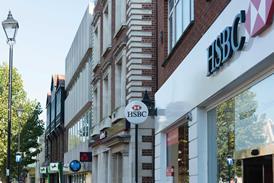Torts – Trespass – Access – Bridleways – Damages
Field Common Ltd v Elmbridge Borough Council: Ch D (Mr Justice Warren): 27 August 2008.
The court was required to assess damages in respect of the defendant local authority’s trespass on the land of the claimant company (F).
Between F’s land and an industrial estate owned by the local authority there was a private road. In practice, vehicles using the road encroached on F’s land. The local authority unsuccessfully attempted to buy part of F’s land to widen the road. It later constructed a new road which encroached onto some 225 sq m of F’s land. That was done without F’s consent and F protested about the encroachment. The local authority again tried unsuccessfully to purchase the land over which it had laid tarmac. F issued proceedings for trespass and the local authority claimed that it had acquired a right of way over the land by prescription. The judge held that the claim to a right of way failed and directed an assessment of damages on the basis that the local authority was liable for its own trespasses and those of any other person whom it had caused or permitted to trespass on the land. The relevant period for the assessment of damages was agreed to be the period of slightly less than seven years from the date six years before the issue of proceedings to the date of the judgment. F submitted that the local authority was liable for the acts of trespass by the tenants of the industrial estate and their visitors and should pay as damages the sum, together with interest, which it would have agreed to pay following a negotiation between two hypothetical parties in the position of F and the local authority for the grant of a licence to use the land as part of the access road.
Held: (1) If the local authority was liable at all for the acts of its tenants, it was liable on the basis that the tenants had used and enjoyed F’s land as an access to the industrial estate in the same way as they had used the private road. It would be open to the local authority to demonstrate that particular tenants and their visitors had not used the land, or had done so only to a very limited extent, but there was no such evidence.
(2) The continued presence of the tarmac on the land constituted a trespass which continued from day to day giving rise to a new cause of action from moment to moment, Holmes v Wilson 113 ER 190 KB applied; Blake v Highways Departments (unreported) 6 October 2000 CA (Civ Div) distinguished. If that was wrong, the local authority should have taken the point at the trial of liability and should not be allowed to raise it on the assessment of damages.
(3) The local authority’s liability for the trespass of its tenants depended on whether it had ‘caused or permitted’ its tenants to trespass on F’s land. Before the laying of the tarmac and in the absence of any express permission from the local authority to a tenant to use F’s land as part of the road, it would not have been liable for the trespasses of its tenants. After the laying of the tarmac the local authority had not ‘caused’ the tenants to trespass, but it had ‘permitted’ them to do so. The local authority laid the tarmac to improve the access to the industrial estate for the benefit of the tenants and their visitors. The laying of tarmac on F’s land was so great an encouragement to the tenants to gain access to the industrial estate by use of land that the local authority could be said to have ‘permitted’ use of F’s land, Earl of Sefton v Tophams Ltd (No2) [1967] 1 AC 50 HL considered. F’s failure to insist on the removal of the tarmac did not establish that the tenants trespassed not because of the local authority’s permission, but because of the presence of the tarmac road with the approval of F.
(4) The local authority was not liable for acts of trespass by a particular tenant and its successor, after the person who controlled that tenant had acquired F, with knowledge of F’s dispute with the local authority.
(5) The hypothetical negotiation approach should be used to assess the value to the local authority of the right to use, and license others to use, F’s land for access. The starting point was an assessment of what the local authority at the start of the seven-year period would in fact have been able to extract from its tenants for the right to use the land for access. Tenants of smaller units would be far less likely to agree to any payment than those of larger units.
The additional rent which each tenant was to be taken as willing to pay was 25p per square foot a year for smaller units and 50p for larger units, in respect of built areas only and for each year of the seven-year period. Those amounts should be discounted by 30% and 50% respectively to take account of the facts that existing tenants might not agree to pay because they were happy with the existing access and that the local authority could not prevent tenants from continuing to use F’s land. The extra rent treated as received should then be apportioned 50:50 between F and the local authority.
Judgment accordingly.
For related proceedings see Field Common Ltd v Elmbridge BC (2005) EWHC 2933.
Katherine Holland (instructed by Davies Arnold Cooper) for the claimant; Robin Green (instructed by in-house solicitor) for the defendant.



























No comments yet